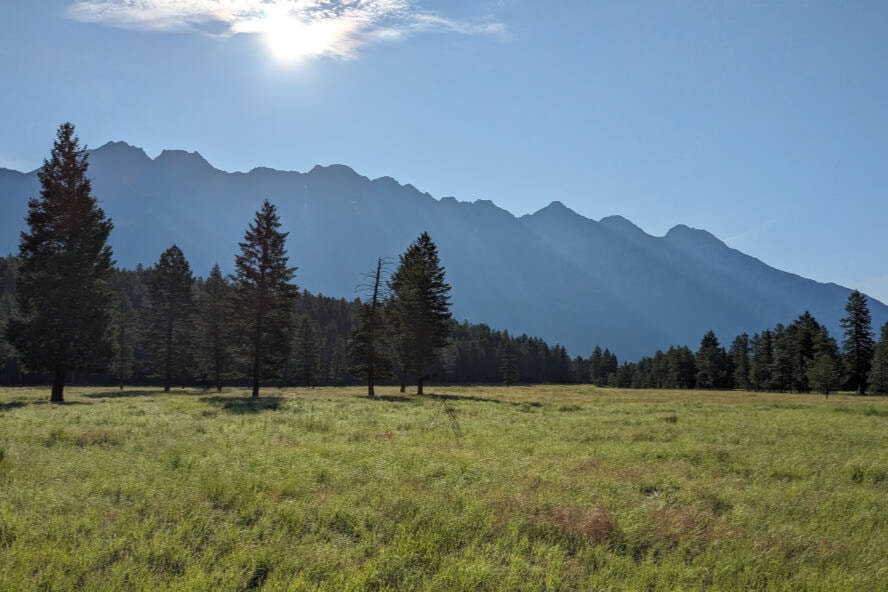The Columbia Basin Trust is providing funding to four organizations that will support initiatives for ecosystem health across the region, with three projects in the immediate Cranbrook and East Kootenay area.
Specific projects include stabilizing water levels along the Kootenay River in the Bummers Flats area near Wasa, restoring 28 hectares to dry open forest in the Bull River Grassland Corridor, improving habitat on 60 hectares of wetlands near the Steeples mountain range, and improving the riparian area on a side channel of the Slocan River near Lemon Creek for fish habitat.
“Large-scale projects of this size can make big differences when it comes to ecological health and native biodiversity,” said Johnny Strilaeff, President and CEO, Columbia Basin Trust. “Maintaining, improving, enhancing, restoring—these are some of the goals when it comes to taking care of the vital landscapes and waterscapes that make up this region’s natural spaces.”
The funding, through the Ecosystem Enhancement Program, is providing nearly $2 million for the four projects, as the same program has provided $16.6 million for 31 initiatives since 2017.
Breaking down each project, the Bummers Flats project is part of a five-year effort that will impact ecosystems along the river, and improve habitat for species such as the Columbia spotted frog and the at-risk northern leopard frog.
Specific efforts will include removing dikes and ditches and re-establishing natural inlets and outlets to the river in order to re-activate the natural flooding of the Kootenay River within the Bummers Flats Conservation Area complex, through partnerships with ʔaq̓am, The Nature Trust of British Columbia (NTBC) Ducks Unlimited and the Province of BC.
“The project vision is to return Bummers Flats to a naturalized, self‐sustaining ecosystem, driven by natural flood pulses and processes,” said Matthew Wilson, Head of Conservation Programs. “Dynamic processes will create a mosaic of wetland habitats with varying characteristics, enhancing the landscapes for many native species, including plants, invertebrates, amphibians, birds and mammals.”
Over in the Bull River area, the Nature Trust of British Columbia is undertaking a five-year project to restore 28 hectares of dry open forest and grasslands in order to support habitat for species such as Rocky Mountain bighorn sheep, Rocky Mountain elk, white‐tailed deer, mule deer and American badger.
Activities include thinning the forest, creating wildlife trees and controlling invasive plants.
“Forest thinning will seek to mimic historic, fire-maintained conditions, increasing the quantity and quality of the forage available for ungulates and improving sightlines to support free movement and avoidance of predators,” said Michelle Daniel, Senior Field Operations Coordinator. “It will also restore areas of native plant diversity and habitat for a variety of wildlife that depend on dry, open forests.”
Over in the foothills of the Steeples Mountain range, the Rocky Mountain Trench Natural Resources Society is undertaking a five-year project on Crown land to improve habitat on 60 hectares of forest, 7,000 square metres of wetland ecosystems and 163 hectares of grasslands.
Activities around places such as Tamarack Lake, Little Shoe, Horseshoe and Big Hill include grass seeding, manual thinning of the forest and managing invasive plants.
“The plan will result in tangible benefits for wildlife through restoration of grassland, wetland and forest ecosystems,” said Marc Trudeau, Coordinator/Project Manager. “It will enhance forested wintering habitat for bighorn sheep; grasslands to the benefit of elk, deer and livestock; and overall ecosystem health and function around the wetland.”
Over in the West Kootenay near Slocan, woody debris will be placed in the water, while live trees and shrubs will be planted along the bank on a side channel of the Slocan River near Lemon Creek.
The work, led by Slocan Integral Forestry Cooperative, is aimed at benefiting juvenile rainbow trout by enhancing its rearing habitat and support fish populations in the Slocan River.
“Mimicking what nature does and allowing nature to continue doing what it does is central to the project,” said Stephan Martineau, Manager. “For example, introducing large woody debris reduces floodwater velocity and energy and provides valuable rearing habitats for juvenile rainbow trout. Planting trees and shrubs will stabilize the banks, increase shade and lower water temperature, promoting aquatic life sustainability while providing additional habitat for birds and terrestrial wildlife.”
In addition to those four projects, the Trust is also providing $257,000 for a further four smaller-scale and shorter-term projects—also prioritizing on-the-ground action—that intend to improve ecological health and native biodiversity.
